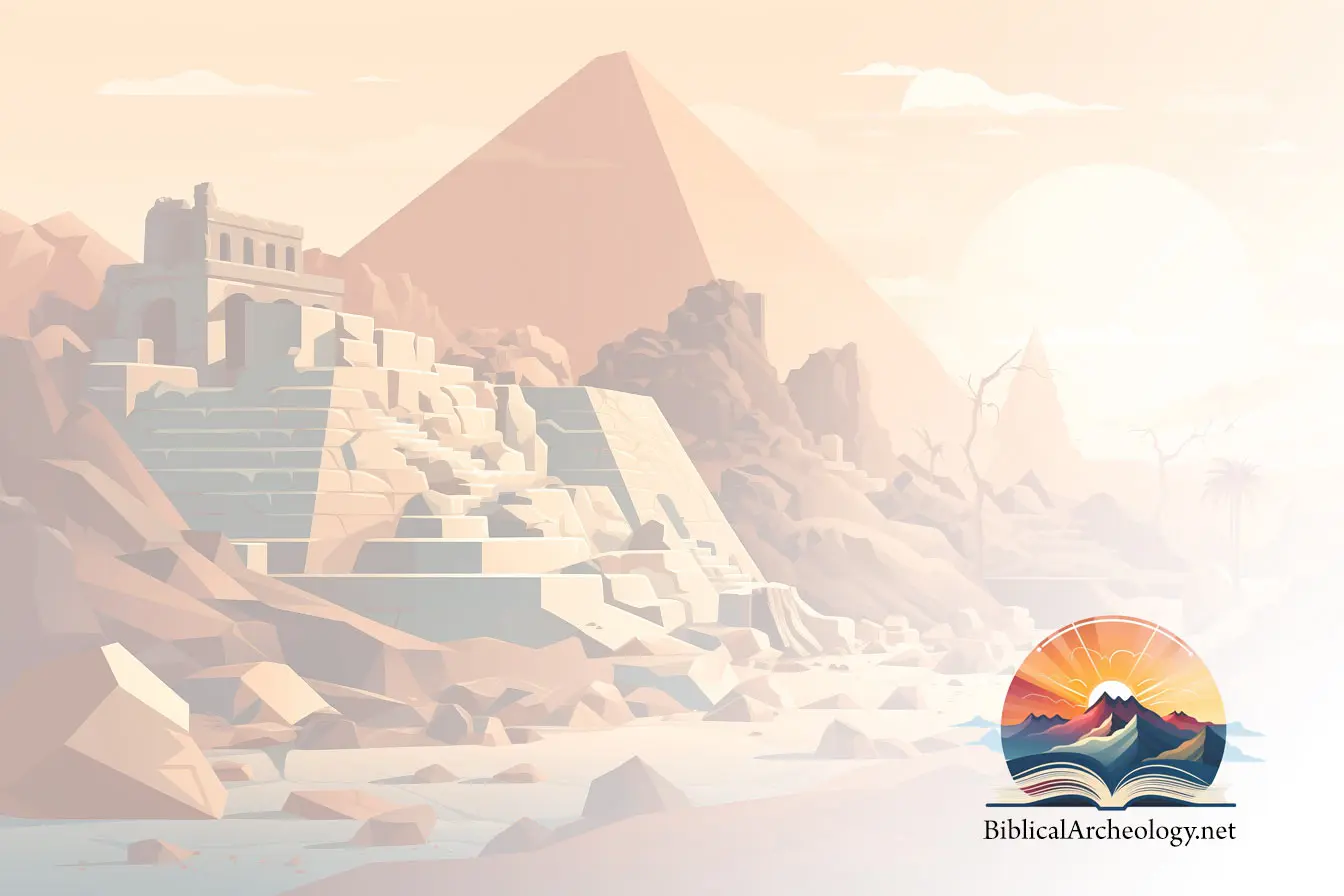Archeology Course 2, Lesson 2
Excavation
The term archaeological excavation has a double meaning:
1. Excavation is the best known and most commonly used within the science of archaeology. In this sense it is the exposure, processing and recording of archaeological remains.
2. The term is also used for an example of the application of the technique to the study of a given site. In this sense, an excavation may sometimes be referred to as a “dig” by those who participate, this being a concise, if over-simplified description of the process. Such a site excavation concerns itself with a specific archaeological site or a connected series of sites, and may be conducted over a number of years.
Overview: Within the practice of excavation, numerous specialised techniques are available for use, and each dig will have its particular features which will determine the archaeologists’ approach. Resources and other practical issues do not allow archaeologists to carry out excavations whenever and wherever they choose. These constraints mean many known sites have been deliberately left unexcavated. This is with the intention of preserving them for future generations as well as recognising the role they serve in the communities that live near them. In some cases it is also hoped that improvements in technology will enable them to be re-examined at a later date, with more fruitful results.
The presence or absence of archaeological remains can often be suggested to a more or less high degree of probability, by remote sensing, such as ground-penetrating radar. Indeed, grosser information about the development of the site may be drawn from this work but the understanding of finer features usually requires excavation though appropriate use of augering. Retrieval of information from artefacts can be achieved only by the invasive method of excavation.
Historical development: The development of excavation techniques has moved over the years from a treasure hunting process to one which seeks to fully understand the sequence of human activity on a given site and that site’s relationship with other sites and with the landscape in which it is set.
Its history began with a crude search for treasure and for artefacts which fell into the category of ‘curio’. These curios were the subject of interest of antiquarians. It was later appreciated that digging on a site destroyed the evidence of earlier people’s lives which it had contained. Once the curio had been removed from its context, most of the information it held was lost. It was from this realization that antiquarianism began to be replaced by archaeology, a process still being perfected.
Site formation: Archaeological material would, to a very large extent, have been called rubbish when it was left on the site. It tends to accumulate in events. A gardener swept a pile of soil into a corner, laid a gravel path or planted a bush in a hole. A builder built a wall and back-filled the trench. Years later, someone built a pig sty onto it and drained the pig sty into the nettle patch. Later still, the original wall blew over and so on. Each event, which may have taken a short or long time to accomplish, leaves a context. This layer cake of events is often referred to as the archaeological sequence or record. It is by analysis of this sequence or record that excavation is intended to permit interpretation, which should lead to discussion and understanding.
Excavation Types
Basic types: There are two basic types of modern archaeological excavation:
1. Research excavation – when time and resources are available to excavate the site fully and at a leisurely pace. These are now almost exclusively the preserve of academics or private societies who can muster enough volunteer labour and funds. The size of the excavation can also be decided by the director as it goes on.
2. Development-led excavation – undertaken by professional archaeologists when the site is threatened by building development. Normally funded by the developer meaning that time is more of a factor as well as its being focused only on areas to be affected by building. The workforce is generally more skilled however and pre-development excavations also provide a comprehensive record of the areas investigated. Rescue archaeology is sometimes thought of as a separate type of excavation but in practice tends to be a similar form of development-led practice. Various new forms of excavation terminology have appeared in recent years such as Strip map and sample some of which have been criticized within the profession as jargon created to cover up for falling standards of practice.
Trial excavations and evaluations in development led archaeology: There are two main types of trial excavation in professional archaeology both commonly associated with development-led excavation: the test pit or trench and the watching brief. The purpose of trial excavations is to determine the extent and characteristics of archaeological potential in a given area before extensive excavation work is under taken. This is usually conducted in development-led excavations as part of Project management planning. the main difference between Trial trenching and watching briefs is that trial trenches are actively dug for the purpose of revealing archaeological potential whereas watching briefs are cursory examination of trenches where the primary function of the trench is something other than archaeology, for example a trench cut for a gas pipe in a road. In the USA a method of evaluation called a Shovel test pit is used which is a specified half meter square line of trial trenches dug by hand.
Concepts in excavation
Stratification: In archaeology, especially in the course of excavation, stratification is a paramount and base concept. It is largely based on the Law of Superposition. When archaeological finds are below the surface of the ground (as is most commonly the case), the identification of the context of each find is vital to enable the archaeologist to draw conclusions about the site and the nature and date of its occupation. It is the archaeologist’s role to attempt to discover what contexts exist and how they came to be created. Archaeological stratification or sequence is the dynamic superimposition of single units of stratigraphy or contexts. In archaeology, the context (physical location) of a discovery can be of major significance. More precisely, an archaeological context is an event in time which has been preserved in the archaeological record. The cutting of a pit or ditch in the past is a context, whilst the material filling it will be another. Multiple fills seen in section would mean multiple contexts. Structural features, natural deposits and inhumations are also contexts. By separating a site into these basic, discrete units, archaeologists are able to create a chronology for activity on a site and describe and interpret it. Stratigraphic relationships are the relationships created between contexts in time representing the chronological order they were created. An example would be a ditch and the back-fill of said ditch. The relationship of “the fill” context to the ditch “cut” context is “the fill” occurred later in the sequence, i.e., you have to dig a ditch first before you can back-fill it. A relationship that is later in the sequence is sometimes refereed to as “higher” in the sequence and a relationship that is earlier “lower” though the term higher or lower does not itself imply a context needs to be physically higher or lower. It is more useful to think of this higher or lower term as it relates to the contexts position in a Harris matrix which is a two dimensional representation of a sites formation in space and time.
Combining stratigraphic contexts for interpretation: Understanding a site in modern archaeology is a process of grouping single contexts together in ever larger groups by virtue of their relationships. The terminology of these larger clusters varies depending on practitioner but the terms interface, sub-group, group and land use are common. An example of a sub-group could be the three contexts that make up a burial; the grave cut, the body and the back-filled earth on top of the body. In turn sub-groups can be clustered together with other sub groups by virtue of their stratigraphic relationship to form groups which in turn form “phases”. A sub-group burial could cluster with other sub group burials to form a cemetery or burial group which in turn could be clustered with a building such as church to produce a “phase”. A less rigorously defined combination of one or more contexts is sometimes called a feature.
Phase and phasing: Phase is the most easily understood grouping for the layman as it implies a near contemporaneous Archaeological horizon representing “what you would see if you went back to a specific point in time”. Often but not always a phase implies the identification of an occupation surface “old ground level” that existed at some earlier time. The production of phase interpretations is one of the first goals of stratigraphic interpretation and excavation. Digging “in phase” is not quite the same as phasing a site. Phasing a site represents reducing the site either in excavation or post excavation to contemporaneous horizons where as “digging in phase” is the process of stratigraphic removal of archaeological remains so as not to remove contexts that are earlier in time “lower in the sequence” before other contexts that have a latter physical stratigraphic relationship to them as defined by the law of superposition. The process of interpretation in practice will have a bearing on excavation strategies on site so “phasing” a site is actively pursued during excavation where at all possible, and is considered good practice. [GFDL Article and Copyright]


